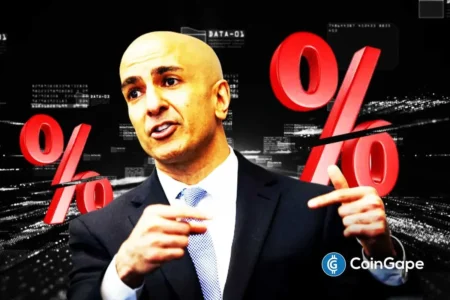The Impact of Coinbase’s Controversial "Everything is Fine" Advertisement
Coinbase’s recent advertisement, titled “Everything is Fine,” has sparked significant buzz in the cryptocurrency and marketing worlds alike. Released on July 31, this bold campaign has garnered both heavy criticism and widespread praise. Although it only ran for a few days before being banned by the UK’s Advertising Standards Authority (ASA) due to concerns over lacking disclosures about cryptocurrency volatility, the ad managed to achieve its marketing goals. Despite the ban, the hashtag #EverythingIsFine surged to become a trending topic in the UK, highlighting a phenomenon known as the Streisand Effect.
The Creativity Behind the Controversy
Coinbase’s advertisement cleverly employs satire to address current societal issues. The two-minute musical segment juxtaposes cheerful melodies with starkly contrasting visuals of pervasive economic struggles in Britain—leaking ceilings, overflowing garbage, and soaring living costs—while employees cheerfully proclaim that “everything is fine.” This ironic portrayal highlights the disconnect between optimistic personal finance solutions, offered by cryptocurrency, and the harsh reality many individuals face. Within just five days of its YouTube release, the ad captured 109,000 views, significantly outpacing the engagement typical for such campaigns.
The Streisand Effect in Action
The term "Streisand Effect" describes a phenomenon where efforts to suppress or censor information inadvertently amplify public interest. Following the ban, the visibility of the advertisement actually soared. Key social media platforms—such as LinkedIn, Reddit, and X (formerly Twitter)—became hotbeds of discussion about the ad, with influencers, venture capitalists, and founders contributing to the discourse. This accidental enhancement of exposure illustrates the paradox of modern advertising: trying to stifle a message often results in an even louder echo.
Public Reactions: A Double-Edged Sword
The reception of Coinbase’s ad was nearly as polarized as the cryptocurrency market itself. While many hailed the campaign as a bold stand against regulatory constraints, critics lamented its reliance on negative emotions. Paragon founder Carnod Young noted that successfully positioning oneself against legacy institutions could validate a brand’s rebellious image. On the contrary, Cassian Horowitz, head of strategic communications at the UK Prime Minister’s office, pointed out that the advertisement’s controversy shifted the focus from its content to the broader implications of regulatory rejection as a marketing strategy.
Is Rage the New Brand Strategy?
Various commentators have weighed in on the effectiveness of emotionally charged marketing campaigns like this. For instance, Andrew Tindall from the London-based ad agency System1 labeled it "the most depressing ad I’ve seen in a while," raising an essential question: Does evoking outrage truly benefit brands? While some argue that negative associations can deepen brand loyalty among certain demographics, others fear the long-term consequences of focusing on anger over positivity in branding.
Conclusion: The Future of Marketing in Web3
Coinbase’s “Everything is Fine” advertisement serves as both a case study in the unpredictable nature of modern marketing and a reflection of the current state of the cryptocurrency landscape. By masterfully leveraging humor and irony, the ad became a conversation starter, even in the face of regulatory backlash. It emphasizes the importance of aligning marketing strategies with public sentiment, particularly in politically charged climates. As the cryptocurrency industry continues to evolve, brands must be prepared to navigate both regulatory frameworks and societal expectations effectively.
In sum, Coinbase’s daring campaign underscores the power of social media, creativity, and timing in today’s marketing landscape. As the world of Web3 expands, brands will need to adapt their narratives to resonate with an increasingly engaged audience while navigating the complexities of regulation and public discourse.
















